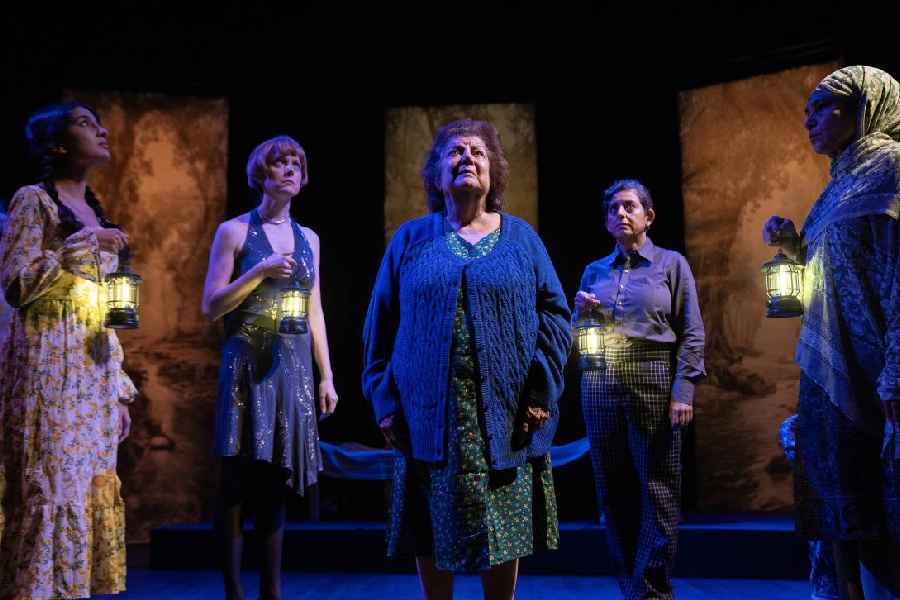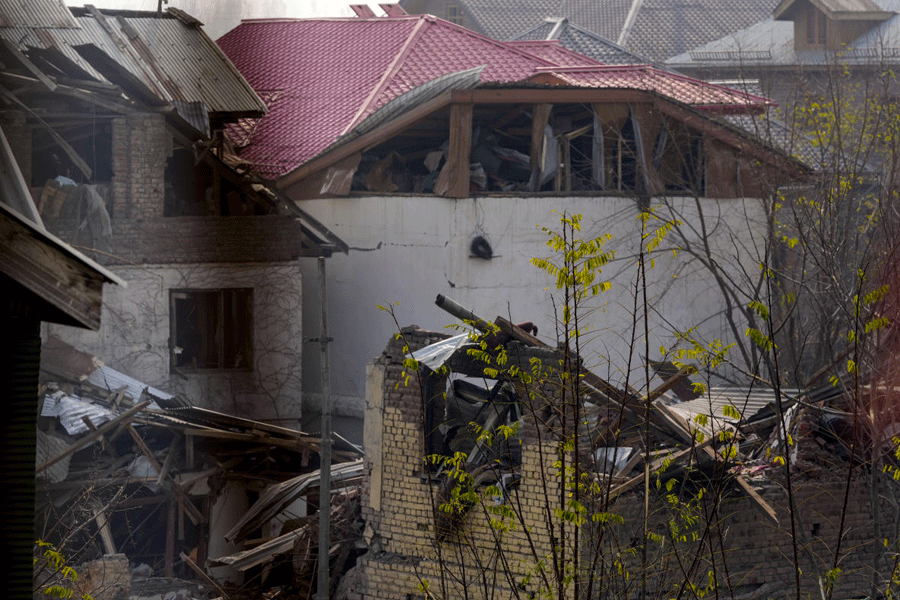Eden Gardens, the site of fiercely fought cricket matches, is globally famous. Eden Creek is not as well known though theatre lovers may have heard of it; it is the name of a play by Dwight Watson, first staged in America in 1986. Adapted by Kaizaad Kotwal for an Indian audience, Eden Creek, Bengal was staged recently at the Prithvi Theatre Festival in Mumbai, held every year to honour Prithviraj Kapoor, doyen of Hindustani theatre.
Kaizaad has set his play — which he has co-directed with his mother, theatre veteran Mahabanoo Mody-Kotwal — in Bengal in the 1944-48 period. Chatting with the writer-director after the show, I asked him why he chose Bengal as the backdrop.
He replied, “When George Eden, Earl of Auckland, was the Governor-General of India, Calcutta was the centre of British rule, so it seemed appropriate to set the play in Bengal if I wanted to retain the name of Watson’s play.” He added, “Eden Creek, in my play, is a fictional place.”
While Watson’s play is about five different women and how they cope during the Great Depression in America, the women in Kotwal’s play represent different aspects of India as an emerging nation. They also represent the country’s diversity, belonging as they do to five different communities.
What the five have in common is their sense of belonging to Eden Creek, an unchanging natural world. Four of them grew up here but went out on their individual paths to a larger world due to varied circumstances. The fifth came to the tranquillity of Eden Creek after a complex life outside.
Zahabia spent her childhood on a farm in Eden Creek with her Abbu and Ammi. When famine struck Bengal in 1943, she went out to work in the shoe factory in Batanagar, where, along with economic independence, she discovered her self-worth. Yet, when she returns to Eden Creek on her mother’s passing, she is nostalgic about her adolescent years, remembering fondly Ammi’s precious blue jug, the lablab pickles she made, her giving birth to Zahabia’s little sister…
The play then moves from the Bengal Famine to the freedom movement.
Piroja, a young Parsi girl, too lives in Eden Creek. With her father abandoning them and her mother going out to earn a living, the onus of looking after her younger siblings falls on Piroja. Life is a drag until a friend invites her to Delhi. The year is 1945 and Delhi transforms Piroja from Eden Creek to Piroje Veer Bahadur from India. Hearing Dr Ambedkar speak from the ramparts of the magnificent Red Fort about courage, enterprise and imagination, widens her horizons and unshackles her from rigid societal norms. She falls in love with her handsome Dalit guide and life is never the same after that.
These were times when women were making their mark in different walks of life. The play makes references to Sarojini Naidu, Sucheta Kripalani, Kanaklata Barua among others. In Kotwal’s play, Dr Ganguly, a woman from Eden Creek who introduces family planning and modern hygienic methods of delivering children in poverty-stricken rural areas belongs to this league.
And then you have Natalia from Warsaw, Poland, who arrives in Calcutta during the tough post-World War I years, to earn a living as a jazz singer in the city’s nightclubs. With beauty and youth to add to her singing talents, she earns a good living. But when her age starts to show, her popularity dips and Natalia leaves for Eden Creek.
The fifth protagonist Maria, played by Mahabanoo, escapes from Eden Creek to work in a factory when her father wants her to marry a much older man. Years later, in 1948, when the country is ablaze with post-Partition riots, Maria returns to her roots, her life in shambles, to the plot of land the older man had left for her.
Continuing my conversation with Kaizaad over the phone, I asked what made him want to stage Watson’s play in India. He replied, “As an 18-year-old, I was Watson’s student at Wabash College, US, and I had seen his play where his wife had played
all five characters. I was drawn to the play’s human aspect. When, on my return to India, USIS asked me to stage a play for the American consulate, I presented Eden Creek with my mother and her team of women actors playing the different characters. The story was exactly as Watson had written.”
Over the years, their theatre company, Poor-Box Productions, has done a lot of women-oriented plays. Kaizaad says, “So I revived Eden Creek and placed it in an Indian context.”
How different then are the women in his adaptation? He says, “Their essential characters are the same though the references are particular to our history. For instance, if in the original, Piroja’s counterpart’s awakening happens at the Chicago World Fair, here it takes place at a rally of India’s freedom movement.”
Five snapshots of a nation in churn... snapshots that would be sharper if the play focussed on them right away without the dramatic device of the cacophonous introductory scene. That apart, Eden Creek, Bengal is a good way of looking back on complex times, through the memories of women.











